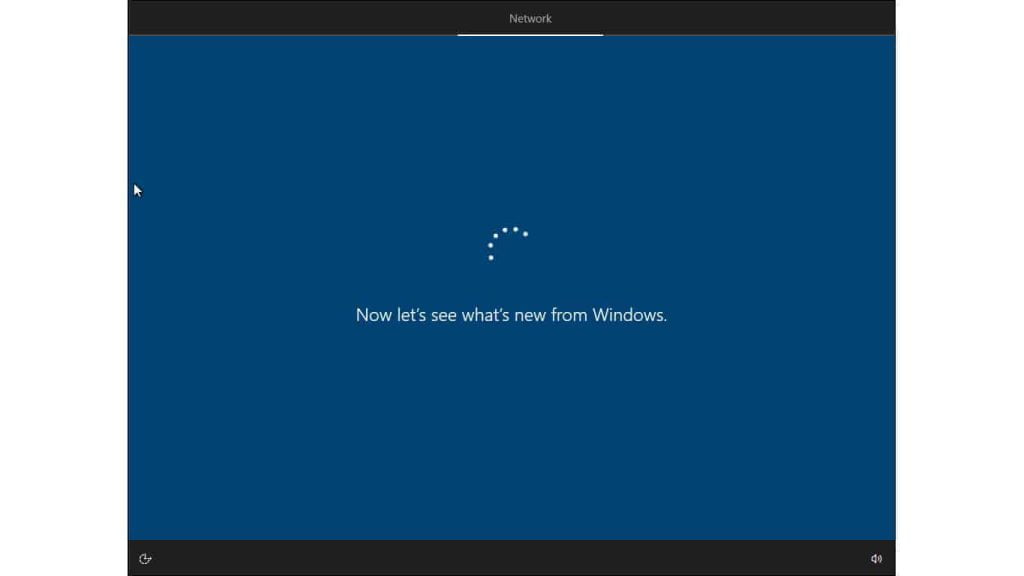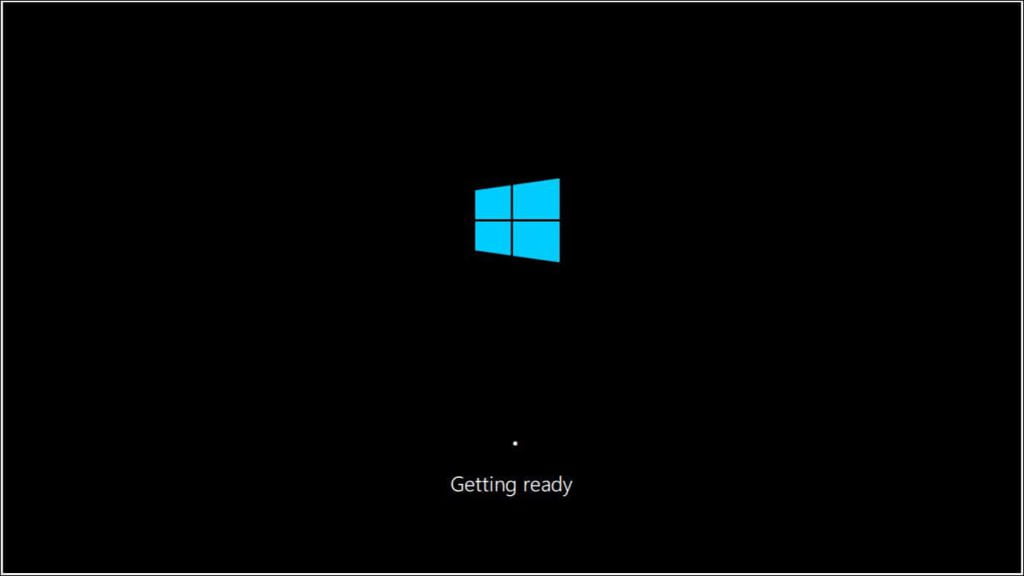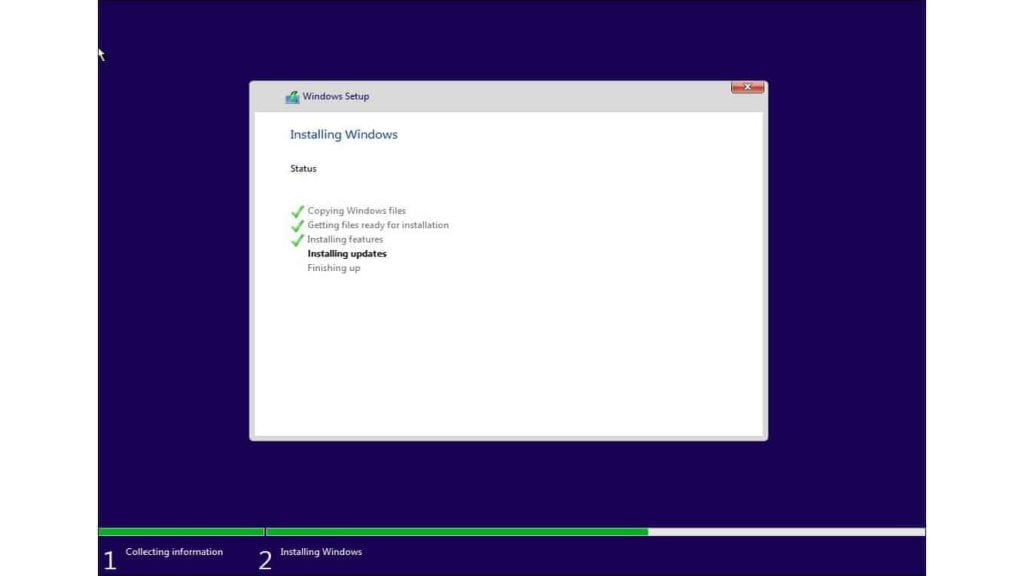After Windows Update I Cant Get Past Black Screen
Windows 10 is the latest version of Windows that was released in 2015. It's user-friendly, features an attractive display, and has plenty of personalization features; however, some users run into random black screen issues. How can you fix these black screen issues, aside from deleting it and installing Linux?
To fix random black screen issues on Windows 10, users first must diagnose the cause. Fixing the problem could be as simple as unplugging an extra monitor or rebooting the system. More complicated problems could require reinstallation of Windows 10 or perhaps some hardware diagnosis.
This article will cover three main topics associated with the Windows 10 black screen:
- Causes of the random black screen.
- Diagnosing and fixing the problems.
- Fixing Windows 10 black screen issues on startup.
It's my aim to help you eliminate any questions you have about random black screen issues.

What typically causes random black screen issues?
Several issues might explain the Windows 10 black screen, commonly referred to as the "Black Screen of Death", including:
- You have two monitors connected with one of them or their connections being faulty.
- There are problems with the initial setup.
- Windows 10 is in the middle of downloading/upgrading.
- Faulty or incomplete Windows 10 installation.
- The computer improperly "wakes up" after sleep mode.
- Errors caused by software or drivers.
- The computer is overheating.
- Issues with the power supply or other connection issues.
Random black screen errors create so much turmoil because many different potential problems can cause the error.
Windows 10 doesn't pop up an error message with the black screen, so there's absolutely nothing to go on to help guide them to the problem.
The multiple monitor black screen of death

Users with multiple monitors connected to their computer setup will often experience random black screen issues due to display and connectivity issues.
Something goes wrong in the detection process, and the screens glitch because the GPU doesn't know which monitor should be receiving which screen, or low quality or faulty cable to one of the screens causes intermittent mayhem.
Another reason could simply be a bug in the graphics card driver, or in the hardware of the graphics card itself.
It isn't just additional monitors that can cause this problem to occur. Any peripheral item hooked up to the computer, such as cameras, speakers, devices connected via Bluetooth, or printers, could lead to the random black screen issue.
Problems with the initial Windows 10 setup

One of the most frequent periods during which people seem to encounter random black screens is in the initial setup of Windows 10.
It might happen during the installation process for some people or almost immediately after the program finishes the setup process.
If it happens while the setup is still in progress, it's usually just stalled, which often happens to people moving over massive amounts of personal data files from whatever previous Windows version they had.
In these cases, the actual setup process could take abnormally long to complete, and in that time, a random black screen may appear.
It could also mean the setup process is hung up on something. It's possible that there was an error or a glitch of some kind, but for whatever reason, there's just nothing else happening.
It's hard to tell the difference between a setup that's taking a long time and a setup that's actually stuck and not going anywhere.
A good rule of thumb is to check the LED light to see if it's still flashing. If it is, the setup process is probably still happening and is just moving slowly. If not, the computer may be frozen.
Windows 10 setup shouldn't take much longer than three hours, but some people say that theirs took up to six hours. If your PC is black screening for more than three to six hours, it might be stuck.
This is the suggested amount of time after doing some research but somehow conflicts with my own experience.
Personally, I've never encountered such long install times. One reason is that you may be slowed down on a slower internet connection for the downloading part if it takes a long time.
I've noticed an average install time on all the computers I've done installations on, to be around 1 hour. This is from the beginning of the process right until you have a functioning desktop.
If it takes around 4 hours or more, I suggest that you consider upgrading some of your hardware.
Windows 10 is in the middle of downloading/upgrading

This goes hand-in-hand with the "initial setup" point above, but it could also happen during upgrades. If upgrades are taking an exceptionally long time, the black screen could appear, or if there's a glitch or problem with the upgrade, the black screen could appear for that.
Faulty or incomplete Windows 10 installation
An incomplete or faulty Windows 10 installation is usually caused by faulty installation files or media. Another cause could be hardware malfunctions as the operating system files are unpacked and installed.
Everything may have looked like it was fine, and the computer may have come up with no problems after the installation.
However, once the user turns the computer back on again after its first shutdown, the random black screen sometimes appears, which could mean that the installation wasn't as successful as it seemed to be.
The computer improperly "Woke Up" after Sleep Mode
Some users have reported experiencing the Black Screen of Death when they try to wake their computers up after being in sleep mode, especially if they've been in sleep mode for quite some time. It seems that Microsoft hasn't released a statement as to why this seems to happen.
Errors caused by software or drivers
Errors stemming from a damaged or improperly loaded driver can also cause Windows 10 to experience random black screen issues, with software glitches being the common culprits.
In the case of software, it most often occurs with some type of software that, when opened, automatically takes over the entire screen. (Media players and games seem to be the biggest offenders.)
If the software is the problem, everything else in the computer should be running fine, which is a major hint that it's a software issue instead of something more serious.
It will most likely be a codec issue for media players, especially if you are viewing the video at full screen. This may give the appearance of the whole screen going black.
Some games are buggy and can also be the cause of a software malfunction.
The computer is overheating
Anyone who's ever held a laptop on bare thighs for hours at a time knows that computers can get super hot, which is why they have internal fans to help cool them down.
Unfortunately, sometimes the fans don't kick on when they should, resulting in the system overheating, which can lead to the Black Screen of Death.
Occasionally, if overheating is the problem, the computer will restart on its own after the black screen and subsequent cooling down.
It is strongly advised that you don't put your laptop against your thighs or on a material surface like a bed. Both these situations can block airflow from being drawn into the laptop to cool the internal components.
To avoid this, I recommend using a laptop cooling pad, which is relatively inexpensive but will definitely keep your laptop cooler and help it live a longer life.
Issues with the power supply or other connection issues

When connection issues or power supply are the problems, the actual result is not the Black Screen of Death, but a black screen, like what the television has when it isn't in use.
It could be caused by the PC's power cord getting unplugged, the cords connecting the monitor or displays to the CPU having been disconnected, or faulty hardware in the cords and cables themselves.
When things aren't plugged in or when the cords or connections are damaged, the monitor's display won't work.
How do I fix my random black screen?
While several different issues could be causing the random black screen errors, there are also several different solutions to those issues.
The first step in fixing any of them is for the user to diagnose the actual problem behind the black screen.
The following is a list of some of the things users can do to fix the problems once they've diagnosed them.
Unplug the other monitors to prevent the multiple monitor Black Screen of Death

If you are lucky, the multiple monitor or peripherals issue is all that's causing their Black Screen of Death problems because this is the problem with the easiest fix.
If random black screen issues arise from something additional hooked up to the PC that's causing a glitch, all you need to do is unplug and disconnect everything that could be the problem.
If there are two monitors, unplug the one that isn't vital to the computer's functioning, or if speakers or printers are hooked up, disconnect them.
For any device that is connected via Bluetooth, Windows 10 can turn off Bluetooth and forcibly close those pairings.
If this is the problem, disconnecting them and restarting the computer will fix the issue. Occasionally, just disconnecting them will solve it, but the computer needs to be shut down more often and rebooted to resolve the issue.
If this is the problem, the next step is determining which device was causing the issue, which should be a simple discovery.
It would be best if you hooked everything back up to the computer one thing at a time to see which one triggers the black screen.
Reboot the computer to fix problems with the initial Windows 10 setup

This issue can be a bit trickier to resolve. When a black screen occurs during the initial setup phase, it's hard to know if the computer has just stalled while still setting up or if it's completely frozen and needs a reboot.
You can keep an eye on the LED display, but even that's not a surefire way to tell what's going on.
However, if the computer has been sitting there for longer than six hours or so, it's safe to assume it's probably frozen and isn't going to finish setting up. If that's the case, users must forcibly shut down the computer and reboot it.
These are the steps users should follow if they suspect the setup process has stalled completely:
- Shut down the computer, and if necessary, hold the power button down for ten seconds until it's forcibly shut down.
- Terminate the connection to the internet by removing the ethernet cable or shutting down the modem.
- Disconnect all the peripherals except for the mouse and keyboard.
- Unplug the computer or remove the laptop's battery and wait 30 seconds minimum to return the battery and replug the cord.
- Turn on the computer without reconnecting to the internet.
- Windows 10 setup should automatically start over, but a manual upgrade might be necessary if it doesn't.
If users follow these steps, they should reset the initial setup process and get the computer back on track quickly.
Windows 10 is in the middle of downloading/upgrading

If the download or upgrade is still in progress, users should leave the PC alone for a while. If they come back a few hours later and see no progress, they can follow the steps to fix problems with the initial Windows 10 setup listed above.
Remove the upgrades to fix issues of faulty or incomplete Windows 10 installation
If the problem stems from Windows 10 not installing wholly or correctly, users may have to remove the upgrades and reinstall the program again from scratch, which can be a hassle.
So, it would help if you troubleshoot everything else to make sure there's no easier problem to fix before resorting to completely deleting/downgrading everything and redownloading.
Readjust the hibernation settings to fix the computer improperly "Waking Up" after the Sleep Mode issue
Users who notice frequent random black screens after the computer has been in sleep mode will need to make some adjustments to the hibernation settings, or you can turn off hibernation altogether.
Toggling the "Turn on Fast Startup" option has also fixed this issue for many users, as something about the Fast Startup feature keeps Windows 10 from loading properly for some users, which results in random black screens whenever the computer comes out of sleep mode.
Turning it off gives the computer more time to load everything correctly. It takes longer for the computer/laptop to reboot with this option turned off, but there are far fewer instances of the Black Screen of Death occurring, too.
There are a few other options for dealing with black screens after hibernation, and Windows Report outlines all of them. These two are the easiest fixes, and they seem to be successful ones for many Windows 10 users.
Errors caused by software or drivers

If the random black screen issues have appeared for users after a recent Windows update, the cause could be a faulty or damaged driver. Again, Windows Report outlines how to fix this problem.
They suggest a few different options that you can try, including disabling your anti-virus software and updating your graphics drivers. However, the steps for the Windows-recommended solution to this problem are as follows:
- Using the original Windows disk, restart the PC and let the install sequence begin. (You may have to press a few keys to get this going.)
- When the Microsoft Installer window appears, click "Next," then open the "Troubleshoot" option.
- Choose "Advanced."
- Once you've opened "Advanced" options, there are more commands to enter.
- After entering the commands and seeing "The operation completed successfully," eject the disk and shut down the computer.
- Once you reboot, the issue should be fixed.
Again, these are just the bare outline of instructions on how to fix this issue.
If full-screen software results in the Black Screen of Death, the problem can be harder to fix and may ultimately result in you having to remove the software from the PC completely. You can try adding it back after a 100% removal, but that doesn't always work.
Another option might include checking to see if the software has an available upgrade. If so, you might be able to solve the problem by upgrading.
If a recent upgrade has occurred, the problem could be that the update was buggy or glitchy. In that case, you might need to revert to a previous or factory reset version of the software.
Let the computer cool down
The immediate fix for overheating is to leave the PC alone and let it cool down. However, you may also want to check inside the case to see if anything could be causing problems to get to the cause of the problem.
Vacuuming or using compressed air to clean out dust and dirt and ensuring the fans are still working is also advisable.
The OPOLAR Cordless Compressed Air Duster might help you with this issue, as it acts as both a vacuum and compressed air. Whether you need to use it to blow out your keyboard or vacuum out the case, it does both with ease.
Malicious software or incorrect explorer shell registry settings
Sometimes an infected system can give you strange symptoms like a black screen after the operating system has loaded.
It could mean that a Registry value has been altered, causing the default Explorer shell to be replaced with something else, or simply deleted.
While this isn't a random problem, I thought I'd mention this fix just in case it might help someone.
If you can press Control + Alt + Delete and see the Task manager appear, it could be that this is the problem.
I have written a small application that runs as a standalone without the need to install it.
To restore the default Explorer shell, download the file from the button below, unzip it, and run it using your Task manager by click on File and Run new task. Run the file with administrator privileges if the option is available to you once you have browsed and selected the file.
If your desktop returns to normal, run an antivirus scan and a Malwarebytes (free) scan to remove unwanted or infected files from your computer.
How to fix Windows 10 Black Screen on startup
How a person fixes black screen issues on the startup screen also depends on what's causing the problems. If the startup screen comes up as a Black Screen of Death, try checking the power supply and connections first. You can also disconnect any peripheral items at this time.
Next, try the old standby: Ctrl + Alt + Del, which will pop up on the screen we all know so well, and you can restart your computer. Hopefully, the issue will be resolved on the reboot.
If not, another option is to use the Windows key + Ctrl + Shift + B, which will reestablish Windows' connection with the video driver, and resetting it will reconnect the computer to the monitor display. If neither of these options works on the startup screen, the problem may be something more serious.
Final thoughts
Even though Windows 10 has a lot of great stuff going for it, the random black screen issues are a pretty big hassle. Luckily, most of the time, they're an easy fix.
Hopefully, this guide will help users diagnose their black screen issues and fix them themselves. For anything more serious, users may need to take their PC to a professional technician.
After Windows Update I Cant Get Past Black Screen
Source: https://computerinfobits.com/windows-10-fix-random-black-screen/